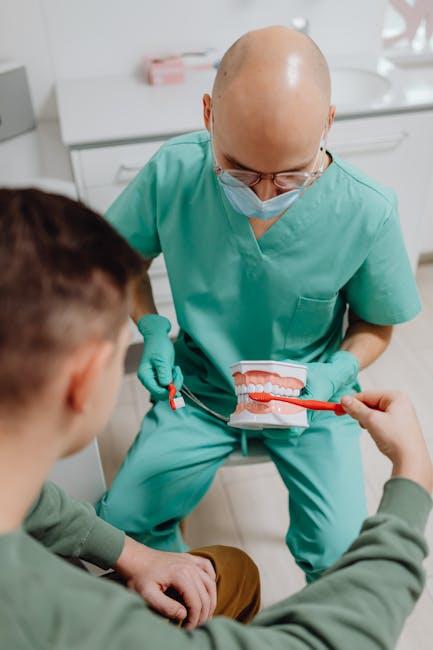Fluoride Q&A: An Expert Breaks Down How It Helps Kids, and Its Unique History in Michigan
Fluoride has long been a key factor in improving dental health, especially for children. But did you know Michigan has a uniquely rich history with fluoride that has helped shape how communities protect young smiles today? In this comprehensive Q&A, an expert from Michigan Medicine sheds light on how fluoride benefits kids, answers common questions, and explores how Michigan played an important role in the nationwide adoption of fluoride treatments.
What Is Fluoride and How Does It Help Children’s Teeth?
Fluoride is a naturally occurring mineral known for strengthening tooth enamel and preventing tooth decay. It is a key ingredient in many dental health products and community water fluoridation programs.
How Does Fluoride Work in Kids’ Mouths?
Fluoride helps by:
- Strengthening enamel: Making teeth more resistant to acid attacks from bacteria and sugary foods.
- Remineralization: Repairing areas of early tooth decay by restoring lost minerals to the enamel.
- Reducing bacterial growth: Inhibiting bacteria that cause cavities.
What Are the Best Ways for Children to Get Fluoride?
- Drinking fluoridated water (tap water).
- Using fluoride toothpaste — in recommended amounts depending on age.
- Professional fluoride treatments during dental visits.
The Unique History of Fluoride in Michigan
Michigan holds a special place in fluoride history. In fact, Grand Rapids, Michigan, was the very first city in the United States to adopt community water fluoridation in 1945. This groundbreaking initiative was a milestone that demonstrated fluoride’s effectiveness in reducing cavities on a large scale.
Why Did Michigan Lead the Way?
Several factors made Michigan the pioneer:
- High prevalence of tooth decay: Dental health concerns were widespread in Michigan’s urban and rural areas.
- Strong public health advocacy: Local health leaders actively promoted innovative and evidence-based dental interventions.
- Research partnerships: Collaborations between universities, local governments, and the dental community supported rigorous studies confirming fluoride’s benefits.
What Were the Outcomes of the Grand Rapids Fluoridation Project?
| Measure | Before Fluoridation | After Fluoridation |
|---|---|---|
| Average cavities per child | 3.3 | 1.9 |
| School absenteeism due to dental issues | High | Significantly reduced |
| Community dental costs | Increased | Declined notably |
Common Fluoride Q&A for Parents and Caregivers
Is Fluoride Safe for My Child?
Yes. When used as recommended by experts, fluoride is safe and highly effective. The key is moderation — too much fluoride can lead to mild discoloration called fluorosis but is rarely a serious concern. Always use the right amount of fluoride toothpaste (a smear or pea-sized amount depending on your child’s age) and follow your dentist’s advice on fluoride treatments.
Can I Rely on Bottled Water for Fluoride Intake?
Most bottled water does not contain significant fluoride unless it’s specifically labeled as fluoridated. To ensure your child benefits from fluoride, drinking community fluoridated tap water or using fluoride toothpaste is important. If your bottled water lacks fluoride, discuss supplementation with your dentist or pediatrician.
When Should My Child Start Using Fluoride Toothpaste?
The American Dental Association recommends starting with a tiny smear of fluoride toothpaste as soon as your child’s first tooth erupts. This helps protect those early developmental teeth and sets good dental hygiene habits early.
Benefits and Practical Tips for Parents
Top Benefits of Fluoride for Kids
- Significant reduction in dental cavities and decay.
- Stronger enamel that is less prone to damage.
- Lower dental treatment costs and fewer painful dental procedures.
- Better overall oral health leading to improved confidence and well-being.
Practical Tips to Maximize Fluoride Benefits
- Encourage drinking tap water: If your community water is fluoridated, it’s one of the easiest ways to get fluoride daily.
- Use fluoride toothpaste appropriately: A rice grain-sized smear for children under 3; a pea-sized amount for children 3 and older.
- Schedule regular dental checkups: Your dentist can provide fluoride varnishes or gels tailored to your child’s needs.
- Limit sugary snacks and drinks: Reducing sugar intake supports fluoride in preventing cavities effectively.
Case Studies & Success Stories from Michigan Families
Families across Michigan have witnessed firsthand the benefits of fluoride. For example, the Johnson family from Grand Rapids shared: “Since our youngest started drinking tap water and using fluoride toothpaste, their dental visits have been cavity-free! We feel confident our kids’ teeth are protected.” Multiple public health initiatives in Michigan continue to lower childhood dental decay rates, underscoring fluoride’s critical role.
Conclusion
Fluoride remains a cornerstone of pediatric dental health, proven to protect children from cavities and promote strong enamel. Michigan’s groundbreaking role in fluoridating community water highlights an effective public health triumph that benefits countless kids to this day. By understanding fluoride’s benefits, history, and practical applications, parents and caregivers can make informed choices to help little smiles shine bright for a lifetime.
For more expert advice on fluoride and children’s dental health, visit Michigan Medicine’s dental health resources.


